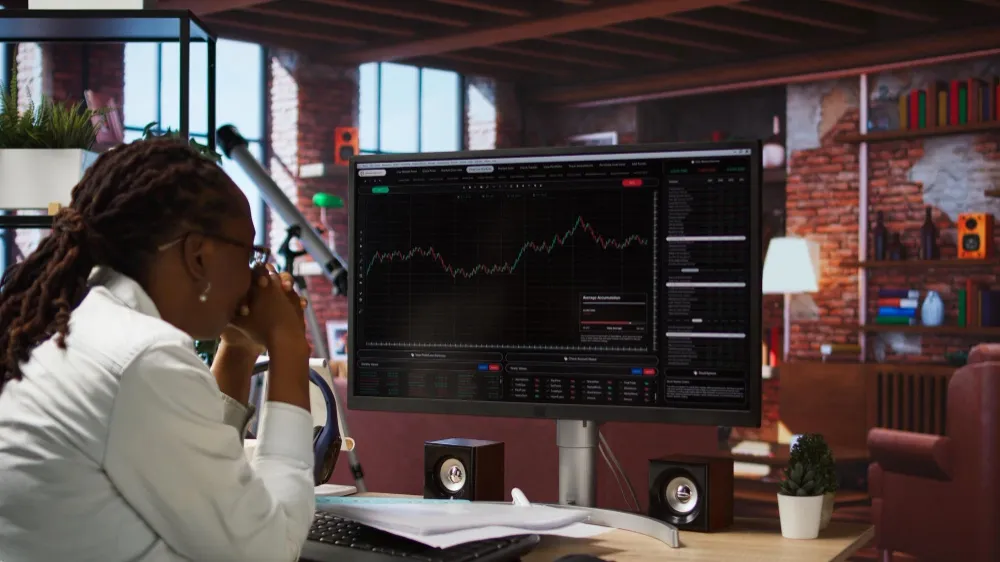Every great investor, from Warren Buffett to Peter Lynch, shares one secret weapon: the power of compounding. It’s not flashy, but it’s the quiet force that turns small, consistent gains into extraordinary wealth over time.
Compounding works like financial gravity: once it starts pulling, it gets stronger the longer you stay invested. Let’s break down what compounding is, how it works, and how you can use it to grow your wealth sustainably.
What Is Compounding?
Compounding means earning returns not only on your original investment but also on the returns that investment has already generated. In simple terms, your money starts making money — and those profits generate even more profits.
Unlike one-time interest, compounding is continuous growth. The earlier you start, the longer your capital has time to multiply.
Example:
If you invest $1,000 at a 10% annual return, you’ll have $1,100 after the first year.
In year 2, that 10% return applies to $1,100, giving you $1,210 — not $1,200.
That extra $10 may seem small, but over decades, the difference becomes enormous.
How Compounding Builds Wealth Over Time
The real magic of compounding lies in time and consistency. Even modest returns, if allowed to grow uninterrupted, can turn small investments into large sums.
The 10-Year Example
If you invest $200 per month at an average 8% annual return, after 10 years you’d have around $36,000 — even though you contributed only $24,000.
The 30-Year Example
Keep that same plan going for 30 years, and your balance could exceed $280,000. That’s compounding at work: the longer you stay invested, the more exponential the growth becomes.
This is why time in the market almost always beats timing the market.
Simple Interest vs Compound Interest
| Type | How It Works | Example After 10 Years (10% Return on $1,000) |
|---|---|---|
| Simple Interest | Earn interest only on the original amount | $2,000 |
| Compound Interest | Earn interest on both principal and past gains | $2,594 |
With compounding, each year’s profit adds to the base, creating a snowball effect. That’s why even a small delay in starting can cost you years of potential growth.
The Formula for Compound Growth
To visualize compounding, use the standard formula:
A = P × (1 + r)ⁿ
- A = Future value
- P = Initial investment
- r = Annual return rate
- n = Number of periods
If you invest $5,000 for 25 years at 8%, the math gives:
A = 5,000 × (1.08)²⁵ = $34,242
That’s nearly seven times your original capital — achieved purely through time and reinvestment.
Why Compounding Favors Long-Term Investors
- Time is your biggest ally
The earlier you start, the greater your advantage. Compounding accelerates dramatically in later years, so missing early contributions means losing decades of growth. - Reinvesting is essential
Reinvesting dividends and interest fuels compounding. Instead of cashing out returns, let them buy more shares — creating a loop of self-growth. - Patience beats perfection
Compounding rewards those who stay invested through market ups and downs. Trying to time perfect entries or exits often reduces total returns. - Small actions matter
Increasing contributions by even 1% or holding investments a few years longer can drastically improve long-term results.
How to Harness Compounding Effectively
1. Start Early, Even with Small Amounts
You don’t need a huge sum to benefit. Investing $100 a month at 8% for 40 years grows to nearly $300,000. Waiting just 10 years to start cuts that result in half.
2. Reinvest Dividends Automatically
Use dividend reinvestment plans (DRIPs) or ETF auto-reinvestment features so every payout buys more shares and compounds your earnings.
3. Stay Invested Through Volatility
Markets rise and fall, but staying invested allows compounding to keep working. Selling during downturns resets the growth cycle.
4. Increase Contributions Over Time
Whenever your income grows, raise your investment amount. Even small increments can add years of compounding advantage.
5. Choose Quality, Long-Term Assets
Stable companies, diversified ETFs, and index funds are ideal for compounding because they generate consistent returns over time.
Compounding in Real Life
Warren Buffett is the clearest example of compounding power. He started investing at 11 and earned over 90% of his wealth after age 60, simply by staying invested for decades.
Compounding rewards consistency far more than brilliance. The biggest advantage isn’t knowing the next hot stock, it’s giving your money time to grow.
Common Mistakes That Break Compounding
- Frequent withdrawals: Interrupting growth resets progress.
- Chasing quick gains: High-risk trades rarely sustain long-term returns.
- Ignoring fees: Even 1% annual fees can erode compounding effects over decades.
- Holding idle cash: Money outside the market doesn’t compound.
Conclusion
The power of compounding is simple but profound: time + consistency = wealth. It’s the foundation of every successful long-term investor’s journey.
Start early, reinvest consistently, and resist the urge to time the market. Whether you’re building a retirement plan or investing in global ETFs, compounding is the quiet engine that turns steady effort into lasting financial freedom.
With Gotrade, you can begin investing in U.S. stocks and ETFs from just $1, giving your money the time and opportunity it needs to compound. Download Gotrade app now!
FAQ
1. What is the main benefit of compounding?
It allows your returns to generate more returns, creating exponential growth over time.
2. How often should I reinvest dividends?
Automatically, if possible. The sooner dividends are reinvested, the stronger the compounding effect.
3. Is compounding risk-free?
No. Market volatility still affects results, but staying invested long-term reduces risk.
4. When should I start?
Now. The earlier you begin, the longer compounding has to work in your favor.
Disclaimer
Gotrade is the trading name of Gotrade Securities Inc., registered with and supervised by the Labuan Financial Services Authority (LFSA). This content is for educational purposes only and does not constitute financial advice. Always do your own research (DYOR) before investing.




